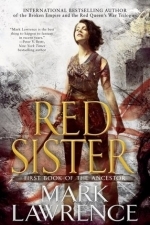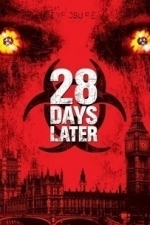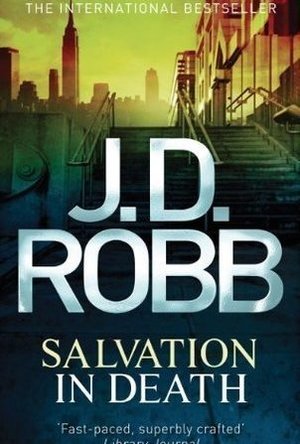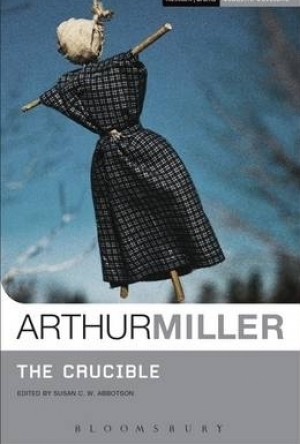Search
Search results

iMissal Catholic (Mass Reading, Calendar, Lectionary)
Reference and Lifestyle
App
With over 4,000 5-Star Reviews, we hope that you will agree that iMissal is the #1 Catholic App. ...

The Rose and the Ring
Book
The plot opens on the royal family of Paflagonia eating breakfast together: King Valoroso, his wife,...
Chris Byers (4 KP) rated Ready Player One in Books
Mar 14, 2018
Great action (3 more)
Cool references
Engaging
Solid detail and character development
Some anti-Christian sentiment (1 more)
What happens after the ending- would love follow up info
A Christian Review Of Ready Player One
I just finished another entertaining romp into the fictional realm with Ernest Cline's, Ready Player One. This was particularly engaging for a former/current video gamer like myself. It also provided a setting that I feel is a potentially realistic outcome of our current technology boom and humanist outlook in society.
The plot centers around Wade and the online game OASIS. The OASIS has expanded such that nearly everyone in society is constantly jacked into the system, neglecting real-life in favor of virtual fantasy and role playing. The OASIS gives users the ability to level up a character (Similar to an MMO like World of Warcraft), and interact virtually with other "Avatars."
The sad reality is that the real world has become a shell of its former self after multiple wars, and no one really seems to mind as they are constantly jacked into the fantasy world of the OASIS.
The OASIS creator dies and leaves his money (multi-billion) to whomever can solve a set of obscure puzzles built into the OASIS, all linked to 1980s trivia.
While it sounds odd on the surface, the first-person narration style gives the feel that you are actually a part of this new reality. The descriptions of the game and Avatar functions are well done.
Spiritually, just like the Hunger Games Trilogy, it is lacking. In what I am calling post-apocalypic humanism, the world is obviously very anti-religion/Christianity in this setting.
My theory would be that the humanistic views that are permeating our society currently eventually led to the decline in civilization as man was not accountable to anyone but himself, and the world suffered for it.
It is clear from the beginning that the protagonist, Wade, has never believed in God (though his friendly neighbor is described as a Christian who spends time logged into the OASIS at a virtual church, worshipping). The way that this is expressed comes across much like the way humanists and atheists of our day express it. With much distaste and an inferior view of God. God is compared to the Easter Bunny and other childhood fantasies, and the characters in the book do not seek any higher power. Still Wade is not an entirely unlikable character, even in light of his lack of faith, and this mindset is not prominently mentioned enough to detract from the book as a whole. Christians will likely feel pity for the characters whose mere existence has no meaning.
For Christians, we know that through our relationship with Christ, this life has meaning, and we have a purpose. There is no randomness, but rather a carefully orchestrated plan for each of us by a God who loves us and longs for us to be with him eternally.
A post-apocalypic world viewed through Christian eyes would be much less dystopian, so I imagine that is why authors in this category of fiction stray from God when possible. It adds to the bleak outlook of characters whose only purpose is living day to day, and trying to get along with one another.
I think Christians who read this type of literature should be aware that it is far from the truth that we know in Christ Jesus. When we see the world through only human eyes, and every man does what is right in his own eyes, we can only expect such a derelict society to be the result.
Ready Player One is an entertaining, albeit bleak story with solid detail and character development. Most Christians can skip this one, but for any gamers or fans of the 1980s out there it could provide a good fiction read.
Discussion Questions for Christians:
Does our society seem to be heading down a path that would lead to this type of world?
How would the worldview in the book be different if the main characters had a focus on Christ?
Can a protagonist that is not Christian, but a "decent guy" be a good role model for us?
Would living in a virtual world the majority of the time give us a distorted view of reality?
The plot centers around Wade and the online game OASIS. The OASIS has expanded such that nearly everyone in society is constantly jacked into the system, neglecting real-life in favor of virtual fantasy and role playing. The OASIS gives users the ability to level up a character (Similar to an MMO like World of Warcraft), and interact virtually with other "Avatars."
The sad reality is that the real world has become a shell of its former self after multiple wars, and no one really seems to mind as they are constantly jacked into the fantasy world of the OASIS.
The OASIS creator dies and leaves his money (multi-billion) to whomever can solve a set of obscure puzzles built into the OASIS, all linked to 1980s trivia.
While it sounds odd on the surface, the first-person narration style gives the feel that you are actually a part of this new reality. The descriptions of the game and Avatar functions are well done.
Spiritually, just like the Hunger Games Trilogy, it is lacking. In what I am calling post-apocalypic humanism, the world is obviously very anti-religion/Christianity in this setting.
My theory would be that the humanistic views that are permeating our society currently eventually led to the decline in civilization as man was not accountable to anyone but himself, and the world suffered for it.
It is clear from the beginning that the protagonist, Wade, has never believed in God (though his friendly neighbor is described as a Christian who spends time logged into the OASIS at a virtual church, worshipping). The way that this is expressed comes across much like the way humanists and atheists of our day express it. With much distaste and an inferior view of God. God is compared to the Easter Bunny and other childhood fantasies, and the characters in the book do not seek any higher power. Still Wade is not an entirely unlikable character, even in light of his lack of faith, and this mindset is not prominently mentioned enough to detract from the book as a whole. Christians will likely feel pity for the characters whose mere existence has no meaning.
For Christians, we know that through our relationship with Christ, this life has meaning, and we have a purpose. There is no randomness, but rather a carefully orchestrated plan for each of us by a God who loves us and longs for us to be with him eternally.
A post-apocalypic world viewed through Christian eyes would be much less dystopian, so I imagine that is why authors in this category of fiction stray from God when possible. It adds to the bleak outlook of characters whose only purpose is living day to day, and trying to get along with one another.
I think Christians who read this type of literature should be aware that it is far from the truth that we know in Christ Jesus. When we see the world through only human eyes, and every man does what is right in his own eyes, we can only expect such a derelict society to be the result.
Ready Player One is an entertaining, albeit bleak story with solid detail and character development. Most Christians can skip this one, but for any gamers or fans of the 1980s out there it could provide a good fiction read.
Discussion Questions for Christians:
Does our society seem to be heading down a path that would lead to this type of world?
How would the worldview in the book be different if the main characters had a focus on Christ?
Can a protagonist that is not Christian, but a "decent guy" be a good role model for us?
Would living in a virtual world the majority of the time give us a distorted view of reality?
Tim Booth recommended Horses by Patti Smith in Music (curated)
Alice (12 KP) rated Red Sister in Books
Jul 3, 2018
<i>Many thanks to Mark for providing me a copy of this book in exchange for an honest review </i>
Original review can be found on my blog Raptureinbooks <a href="http://wp.me/p5y0lX-1I9">here</a href>
<blockquote>It is important, when killing a nun, to bring an army of sufficient size.</blockquote>
I know they say to never judge a book by its cover but first impressions are everything. The above quote is the first line written in <i>Red Sister</i> - Mark Lawrence's newest masterpiece. I don't use the term lightly.
For those of you who haven't read his work before - know this: it will change how you read fantasy for the better. There's a really apt line in this book for this sentiment:
<blockquote>...a book is as dangerous as any journey you might take. The person who closes the back cover may not be the same one that opened the front one. </blockquote>
For those of you who have, you know his main characters are the ultimate in anti-heroes. All male, all rough, all the epitome of badassery. <i>Red Sister</i> is the first with a strong - and I mean strong -all female cast.
From the first instance you know this book is going to be top of the scale of epicness, <i>Red Sister</i> will draw you in within moments of opening the pages.
It follows the story of Nona Grey- an eight year old girl saved from the noose by an unlikely saviour - a nun - Abbess Glass, leader of the Sweet Mercy Convent. Nona becomes a novice nun and begins her journey to becoming a Red Sister- a nun skilled in combat. At first the book can feel a little like you've stepped backwards in time to where children are bought and sold on the road, where the Church has almost absolute power and where little girls do not become killer nuns; however as the story progresses and Nona's back story is revealed to us piece by piece I found my original thoughts to be utter bullshit because frankly the plot is outstanding.
I'll hold my hand up and say I've never read a book about nuns before but Red Sister has ruined me for any other.
As signature with Mark's work, Red Sister has the perfect balance between seriousness and humour with some brilliant descriptions of the most simplest of things:
<blockquote>...and a quill. This latter gave the impression that the bird from which it was taken had died of some wasting disease, falling from its perch into a dirty puddle before being run over by several carts and finally thoroughly chewed by a hungry cat.</blockquote>
The dialogue was witty and the right tone for what is ultimately a group of girls in boarding school who both love and hate each other and what they do on a daily basis. The friendships made at Sweet Mercy are friendships built to last through the toughest of scenarios, literally through thick and thin. Nona's past catches up with her frequently and she is tested to her highest limits and on occasion shoved over that limit.
<blockquote>"Trust is the most insidious of poisons." </blockquote>
There are some harsh lessons to be learned in <i>Red Sister</i> and not just the physical ones - of which there are many. The plot is thick with action, betrayal, uncanny abilities and supernatural old world bloodlines that show through in current generations that haven't been seen since the first tribes settled in Abeth; with prophecies galore and the odd psycho, bare knuckle fighting in the pits and justice is wrought.
The revelations are spectacular and revealed in unexpected ways that have totally done them justice. The writing style of Mark Lawrence is once more on point with the right amount of length for each chapter; the supernatural demon element was written in a great way. Overall, it was a masterpiece of the genre and deserves all the stars.
<i>Red Sister</i> has been one of the highlights of my year so far and it is outstanding. I've tried not to give anything away which is hard cause I want to give all the spoilers! I'll leave you with a parting quote that sums up the book nicely.
<blockquote>"Words are steps along a path: The important thing is to get where you're going."</blockquote>
Original review can be found on my blog Raptureinbooks <a href="http://wp.me/p5y0lX-1I9">here</a href>
<blockquote>It is important, when killing a nun, to bring an army of sufficient size.</blockquote>
I know they say to never judge a book by its cover but first impressions are everything. The above quote is the first line written in <i>Red Sister</i> - Mark Lawrence's newest masterpiece. I don't use the term lightly.
For those of you who haven't read his work before - know this: it will change how you read fantasy for the better. There's a really apt line in this book for this sentiment:
<blockquote>...a book is as dangerous as any journey you might take. The person who closes the back cover may not be the same one that opened the front one. </blockquote>
For those of you who have, you know his main characters are the ultimate in anti-heroes. All male, all rough, all the epitome of badassery. <i>Red Sister</i> is the first with a strong - and I mean strong -all female cast.
From the first instance you know this book is going to be top of the scale of epicness, <i>Red Sister</i> will draw you in within moments of opening the pages.
It follows the story of Nona Grey- an eight year old girl saved from the noose by an unlikely saviour - a nun - Abbess Glass, leader of the Sweet Mercy Convent. Nona becomes a novice nun and begins her journey to becoming a Red Sister- a nun skilled in combat. At first the book can feel a little like you've stepped backwards in time to where children are bought and sold on the road, where the Church has almost absolute power and where little girls do not become killer nuns; however as the story progresses and Nona's back story is revealed to us piece by piece I found my original thoughts to be utter bullshit because frankly the plot is outstanding.
I'll hold my hand up and say I've never read a book about nuns before but Red Sister has ruined me for any other.
As signature with Mark's work, Red Sister has the perfect balance between seriousness and humour with some brilliant descriptions of the most simplest of things:
<blockquote>...and a quill. This latter gave the impression that the bird from which it was taken had died of some wasting disease, falling from its perch into a dirty puddle before being run over by several carts and finally thoroughly chewed by a hungry cat.</blockquote>
The dialogue was witty and the right tone for what is ultimately a group of girls in boarding school who both love and hate each other and what they do on a daily basis. The friendships made at Sweet Mercy are friendships built to last through the toughest of scenarios, literally through thick and thin. Nona's past catches up with her frequently and she is tested to her highest limits and on occasion shoved over that limit.
<blockquote>"Trust is the most insidious of poisons." </blockquote>
There are some harsh lessons to be learned in <i>Red Sister</i> and not just the physical ones - of which there are many. The plot is thick with action, betrayal, uncanny abilities and supernatural old world bloodlines that show through in current generations that haven't been seen since the first tribes settled in Abeth; with prophecies galore and the odd psycho, bare knuckle fighting in the pits and justice is wrought.
The revelations are spectacular and revealed in unexpected ways that have totally done them justice. The writing style of Mark Lawrence is once more on point with the right amount of length for each chapter; the supernatural demon element was written in a great way. Overall, it was a masterpiece of the genre and deserves all the stars.
<i>Red Sister</i> has been one of the highlights of my year so far and it is outstanding. I've tried not to give anything away which is hard cause I want to give all the spoilers! I'll leave you with a parting quote that sums up the book nicely.
<blockquote>"Words are steps along a path: The important thing is to get where you're going."</blockquote>
Darren (1599 KP) rated 28 Days Later (2002) in Movies
Jun 20, 2019
Verdict: Modern Zombie Gem
Story: 28 Days Later starts by showing a group of activists breaking into a laboratory where chimps are forced to watch some of the most gruesome sites in human history. This was designed to create pure rage and when the chimps are released an epidemic starts. 28 Days Later (title drop) we meet Jim (Murphy) who wakes up in a hospital, alone he searches looking for help but the hospital, streets and everywhere is empty. Wonder around the empty London Jim finds a church filled with infected that chase him before getting save by Mark (Huntley) and Selena (Harris) who also fill in the blanks of what happened.
Jim finds out the harsh reality of the world now but meeting Frank (Gleeson) and his daughter Hannah (Burns) gives them a chance to go to a radio signal left by the military. The group soon find the military holding up in a mansion lead by Major Henry West (Eccleston) but not everything is as it seems.
28 Days Later brings the modern infected zombie film to life in one of the best story ideas we have seen. It is good to see a story that the infection can only be spread rather than you turn when you die which is big change to all we have seen. The journey itself is been there seen that but what we get is a revenge film with infected around once we meet the military. This shows us that the enemy could come from all direction and our characters are never going to be safe in the world now. This is easily one of the best zombie based films in recent years. (9/10)
REPORT THIS AD
Actor Review
Cillian Murphy: Jim waking up alone in a hospital he wonders the empty city before being found by other survivors, with a group he heads to the military safe zone where he ends up having to fight to save the rest of his group from not only infected but the soldiers. Cillian gives a great performance and this put him on the map for bigger roles. (9/10)
jim
Naomie Harris: Selena the nonsense survivor who takes no prisoners which we see from the moment her fellow survivor gets infected. Naomie gives a good performance showing that she was always going to be in bigger films. (8/10)
Brendan Gleeson: Frank caring father who has waited for support before taking his daughter to a radio signal he has been hearing. This character may only be a supporting character but his final moments are one of the most memorable turns in this genre history. Brendan does a good job in what is just a supporting performance. (8/10)
Christopher Eccleston: Major Henry West who is running the military unit that has been calling for the survivors but his motives are not what they seem. Christopher gives a good performance in the role. (7/10)
Support Cast: 28 Days Later doesn’t have the biggest supporting cast we have a couple of other survivors as well as the soldiers in the military unit. They all help as they show us what the characters are capable off.
Director Review: Danny Boyle – Danny does a great job directing this zombie classic that is easily one of the best in the genre. (9/10)
Horror: 28 Days Later uses plenty of horror elements with survival horror shinning through. (10/10)
Music: 28 Days Later uses brilliant scores to build the tension up through the scenes. (9/10)
Settings: 28 Days Later uses the settings really well to show how empty busy places could be when the world comes to an end. (9/10)
Special Effects: 28 Days Later uses great special effects with the infected creation. (9/10)
Suggestion: 28 Days Later is one to watch for every horror fan out there. (Horror Fans Watch)
Best Part: Suspense building.
Worst Part: Nothing
Action Scene Of The Film: Jim breaks into the mansion
REPORT THIS AD
Kill Of The Film: Frank
Scariest Scene: Jim’s returns home
Believability: No (0/10)
Chances of Tears: No (0/10)
Chances of Sequel: Has one sequel with talks of another always around.
Post Credits Scene: There is the alternative ending
Oscar Chances: No
Box Office: $82 Million
Budget: $8 Million
Runtime: 1 Hour 53 Minutes
Tagline: His fear began when he woke up alone. His terror began when he realised he wasn’t.
Trivia: The scene where Jim and Selena celebrate with Frank and Hannah was shot on September 11, 2001. Danny Boyle said it felt extremely strange to shoot a celebratory scene on that particular day.
Overall: Brilliant Infected Film
https://moviesreview101.com/2015/03/14/28-days-later-2002/
Story: 28 Days Later starts by showing a group of activists breaking into a laboratory where chimps are forced to watch some of the most gruesome sites in human history. This was designed to create pure rage and when the chimps are released an epidemic starts. 28 Days Later (title drop) we meet Jim (Murphy) who wakes up in a hospital, alone he searches looking for help but the hospital, streets and everywhere is empty. Wonder around the empty London Jim finds a church filled with infected that chase him before getting save by Mark (Huntley) and Selena (Harris) who also fill in the blanks of what happened.
Jim finds out the harsh reality of the world now but meeting Frank (Gleeson) and his daughter Hannah (Burns) gives them a chance to go to a radio signal left by the military. The group soon find the military holding up in a mansion lead by Major Henry West (Eccleston) but not everything is as it seems.
28 Days Later brings the modern infected zombie film to life in one of the best story ideas we have seen. It is good to see a story that the infection can only be spread rather than you turn when you die which is big change to all we have seen. The journey itself is been there seen that but what we get is a revenge film with infected around once we meet the military. This shows us that the enemy could come from all direction and our characters are never going to be safe in the world now. This is easily one of the best zombie based films in recent years. (9/10)
REPORT THIS AD
Actor Review
Cillian Murphy: Jim waking up alone in a hospital he wonders the empty city before being found by other survivors, with a group he heads to the military safe zone where he ends up having to fight to save the rest of his group from not only infected but the soldiers. Cillian gives a great performance and this put him on the map for bigger roles. (9/10)
jim
Naomie Harris: Selena the nonsense survivor who takes no prisoners which we see from the moment her fellow survivor gets infected. Naomie gives a good performance showing that she was always going to be in bigger films. (8/10)
Brendan Gleeson: Frank caring father who has waited for support before taking his daughter to a radio signal he has been hearing. This character may only be a supporting character but his final moments are one of the most memorable turns in this genre history. Brendan does a good job in what is just a supporting performance. (8/10)
Christopher Eccleston: Major Henry West who is running the military unit that has been calling for the survivors but his motives are not what they seem. Christopher gives a good performance in the role. (7/10)
Support Cast: 28 Days Later doesn’t have the biggest supporting cast we have a couple of other survivors as well as the soldiers in the military unit. They all help as they show us what the characters are capable off.
Director Review: Danny Boyle – Danny does a great job directing this zombie classic that is easily one of the best in the genre. (9/10)
Horror: 28 Days Later uses plenty of horror elements with survival horror shinning through. (10/10)
Music: 28 Days Later uses brilliant scores to build the tension up through the scenes. (9/10)
Settings: 28 Days Later uses the settings really well to show how empty busy places could be when the world comes to an end. (9/10)
Special Effects: 28 Days Later uses great special effects with the infected creation. (9/10)
Suggestion: 28 Days Later is one to watch for every horror fan out there. (Horror Fans Watch)
Best Part: Suspense building.
Worst Part: Nothing
Action Scene Of The Film: Jim breaks into the mansion
REPORT THIS AD
Kill Of The Film: Frank
Scariest Scene: Jim’s returns home
Believability: No (0/10)
Chances of Tears: No (0/10)
Chances of Sequel: Has one sequel with talks of another always around.
Post Credits Scene: There is the alternative ending
Oscar Chances: No
Box Office: $82 Million
Budget: $8 Million
Runtime: 1 Hour 53 Minutes
Tagline: His fear began when he woke up alone. His terror began when he realised he wasn’t.
Trivia: The scene where Jim and Selena celebrate with Frank and Hannah was shot on September 11, 2001. Danny Boyle said it felt extremely strange to shoot a celebratory scene on that particular day.
Overall: Brilliant Infected Film
https://moviesreview101.com/2015/03/14/28-days-later-2002/
Hazel (1853 KP) rated He Walks Among Us: Encounters with Christ in a Broken World in Books
Dec 17, 2018
<b>Synopsis</b>
Richard Stearns is the president of World Vision United States who, along with his wife Reneé, regularly visits the poorer countries of our world to see the ways the charity is helping to change people's lives. <i>He Walks Among Us</i> is a compilation of short thoughts and observations (two-to-three pages, including photographs) they have both had while conducting their work. As they alternate the writing, we are given opinions and experiences that we may be able to relate to our own. As Richard is the president of the organisation, he can give an insight into the way World Vision works, however, he can also express his opinions as a father, grandfather and believer in Christ. Reneé is also a World Vision worker, but due to her nature, gives a more maternal impression of the scenes she witnesses.
The individuals written about in this book come from all over the world. Most are located in Africa, but there are also similar stories in Asia, South and North America, and even Eastern Europe. The terrors these people have faced are shocking (AIDs, war, sexual abuse, natural disasters etc), but each family has been aided in some way by World Vision and their donors.
The purpose of <i>He Walks Among Us</i> is not to promote World Vision, but to encourage us to let God and Jesus into our lives. Richard and Reneé assume their readers are Christians, however, they realise that being a Christian does not equate to fully accepting God's plans. The victims of war, rape, and poverty mentioned have also been touched by Jesus. Many did not know him before World Vision came into their lives, but they have now been transformed through the power of his love - although their situation may not have significantly improved.
The actual stories used to illustrate the work of World Vision are only brief mentions, providing the bare bones of the situations. What Richard and Reneé have focused on is linking these lives, their lives and our lives to passages from the Bible. Either taken literally or metaphorically, the pair manage to relate everything to the actions and fates of a number of key Biblical characters. This emphasises that Our Lord is walking among us, giving life, peace, hope and steadfast faith.
<b>Ideas</b>
Giving someone new hope or purpose in their life can be related to Jesus raising Lazarus from the dead. Whether people are literally dying, or on the edge of hopelessness and despair, improving their situation can turn their lives around.
The donors and workers at World Vision are like the Good Samaritan in Jesus' parable. We do not know these people, know their religion or circumstances, yet we send money and aid. To do nothing would make us the Priest or Levite in the story.
David was only a young boy when he had to face Goliath, yet, against all odds, he defeated him. The children mentioned in this book are similar to David. They each have their metaphorical Goliath's: poverty, illness, loss of parents, war, hunger etc, but with God working through us, these can be overcome.
<b>Noteworthy Bible Verses</b>
Each chapter of the book begins with a Bible verse, and often more are included within the text. Here are a few that really relate to the work of World Vision and the ways in which we can involve ourselves:
Philippians 4:12-13
Luke 21:3-4
Luke 6:20-21
Psalm 23:4
<b>Statistics</b>
23 million people in sub-Sahara Africa are suffering from HIV.
In Soviet-controlled Georgia, churches were banned. Some villages are only just seeing their first church in over 400 years.
20 thousand children under the age of 5 die every day.
Every 4 seconds a child under 5 dies.
Over 2 billion people in the world are living on $2 or less a day.
1 billion people have no access to clean drinking water.
41% of the population in Niger have no clean water.
<b>Citations</b>
Helen Keller: "So much has been given to me, I have no time to ponder over that which is denied."
Oswald Chambers: "The great hindrance in spiritual life is that we will look for big things to do. Jesus took a towel ... and began to wash the disciples' feet."
Mother Theresa: "I am a pencil in the hand of a writing God who is sending a love letter to the world."
C.S. Lewis: "Humility is not thinking less of yourself but thinking of yourself less."
<b>Other Mentions</b>
Hymn - Frances R. Havergal, <i>Take my Life and let it be.</i>
Film - <i>Pushing the Elephant</i>
Richard Stearns is the president of World Vision United States who, along with his wife Reneé, regularly visits the poorer countries of our world to see the ways the charity is helping to change people's lives. <i>He Walks Among Us</i> is a compilation of short thoughts and observations (two-to-three pages, including photographs) they have both had while conducting their work. As they alternate the writing, we are given opinions and experiences that we may be able to relate to our own. As Richard is the president of the organisation, he can give an insight into the way World Vision works, however, he can also express his opinions as a father, grandfather and believer in Christ. Reneé is also a World Vision worker, but due to her nature, gives a more maternal impression of the scenes she witnesses.
The individuals written about in this book come from all over the world. Most are located in Africa, but there are also similar stories in Asia, South and North America, and even Eastern Europe. The terrors these people have faced are shocking (AIDs, war, sexual abuse, natural disasters etc), but each family has been aided in some way by World Vision and their donors.
The purpose of <i>He Walks Among Us</i> is not to promote World Vision, but to encourage us to let God and Jesus into our lives. Richard and Reneé assume their readers are Christians, however, they realise that being a Christian does not equate to fully accepting God's plans. The victims of war, rape, and poverty mentioned have also been touched by Jesus. Many did not know him before World Vision came into their lives, but they have now been transformed through the power of his love - although their situation may not have significantly improved.
The actual stories used to illustrate the work of World Vision are only brief mentions, providing the bare bones of the situations. What Richard and Reneé have focused on is linking these lives, their lives and our lives to passages from the Bible. Either taken literally or metaphorically, the pair manage to relate everything to the actions and fates of a number of key Biblical characters. This emphasises that Our Lord is walking among us, giving life, peace, hope and steadfast faith.
<b>Ideas</b>
Giving someone new hope or purpose in their life can be related to Jesus raising Lazarus from the dead. Whether people are literally dying, or on the edge of hopelessness and despair, improving their situation can turn their lives around.
The donors and workers at World Vision are like the Good Samaritan in Jesus' parable. We do not know these people, know their religion or circumstances, yet we send money and aid. To do nothing would make us the Priest or Levite in the story.
David was only a young boy when he had to face Goliath, yet, against all odds, he defeated him. The children mentioned in this book are similar to David. They each have their metaphorical Goliath's: poverty, illness, loss of parents, war, hunger etc, but with God working through us, these can be overcome.
<b>Noteworthy Bible Verses</b>
Each chapter of the book begins with a Bible verse, and often more are included within the text. Here are a few that really relate to the work of World Vision and the ways in which we can involve ourselves:
Philippians 4:12-13
Luke 21:3-4
Luke 6:20-21
Psalm 23:4
<b>Statistics</b>
23 million people in sub-Sahara Africa are suffering from HIV.
In Soviet-controlled Georgia, churches were banned. Some villages are only just seeing their first church in over 400 years.
20 thousand children under the age of 5 die every day.
Every 4 seconds a child under 5 dies.
Over 2 billion people in the world are living on $2 or less a day.
1 billion people have no access to clean drinking water.
41% of the population in Niger have no clean water.
<b>Citations</b>
Helen Keller: "So much has been given to me, I have no time to ponder over that which is denied."
Oswald Chambers: "The great hindrance in spiritual life is that we will look for big things to do. Jesus took a towel ... and began to wash the disciples' feet."
Mother Theresa: "I am a pencil in the hand of a writing God who is sending a love letter to the world."
C.S. Lewis: "Humility is not thinking less of yourself but thinking of yourself less."
<b>Other Mentions</b>
Hymn - Frances R. Havergal, <i>Take my Life and let it be.</i>
Film - <i>Pushing the Elephant</i>
Midge (525 KP) rated Salvation in Death (In Death, #27) in Books
Dec 17, 2018
Lovely portrayal of the relationship between the two lead characters (1 more)
Some hilarious moments
Gripping And Very Interesting!
Immediately after drinking the wine during a Catholic funeral mass, Father Miguel Flores is dead on the altar. Detective Lieutenant Eve Dallas confirms that the consecrated wine contained potassium cyanide. Though the East Harlem neighbourhood is a long way from the stone mansion she shares with her billionaire husband Roarke, she knows she's looking for a murderer.
The autopsy reveals faint scars of knife wounds, a removed tattoo and evidence of plastic surgery, suggesting “Father Flores” may not be the man his parishioners thought. Now, as Eve pieces together clues that suggest identity theft, gang connections, and a deeply personal act of revenge, she hopes to track down whoever committed this unholy act. Then a second murder takes place, in front of an even larger crowd of worshippers. Are the homicides linked?
Salvation in Death is the 27th book of the "In Death" series, with Eve and Roarke as the lead characters.
Salvation in Death begins with the poisoning of a Catholic priest during mass. The priest, a passionate, dedicated and energetic member of the community, seems to have no enemies. He cared especially about young people, was not depressed, stressed or troubled and every member of the church looked up to him. But when his autopsy reveals some old scars and a covered tattoo, Eve realises that the priest must have some dark secrets in his past. When the tattoo points to a ruthless badass gang, Eve is not convinced that the priest is the person he purports to be. When another religious leader is also killed, Eve and her team have to investigate whether there is a serial killer on the loose or if the cases are coincidental in their timing.
This is the first book I have read from the "In Death" series by J. D. Robb, the pseudonym of Nora Roberts. I loved the portrayal of the relationship between the two lead characters, Eve and Roarke, particularly,
"Everything and all things. That was Eve for him. Nothing he'd ever dreamed of, even in secret in the dirty alleys of Dublin, approached the reality of her. Nothing he possessed could ever be as precious. The taste of her in the cool night, in the pale light, stirred a craving he understood would never be fully sated."
There is an impressive number of characters in this crime novel which I have to say made it a little difficult to follow at times. Others that I found an affinity with were Peabody and her significant other and work colleague, McNab.
"They were a good ten feet from the Homicide bullpen when Peabody's nose went up like a hound on the hunt. "I smell doughnuts." When Peabody increased her pace, Eve started to roll her eyes, but then she smelled them, too."
I also liked the following quote including McNab:-
"We got a snag. One of the sons-in-law's a lawyer." "Shit." "Ain't that always the way?" ......."So. He's making lawyer noises. It's after two A.M., and people have been held here for over four hours, yaddah-blah-blah." "Did you get anything from the interviews?" "Nothing that buzzed and popped......"
Eve is really out of her comfort zone investigating murders that have taken place in Catholic churches. She obviously has a past that she has to come to terms with which she seems to make some progress in Salvation in Death. Roarke and she have a great deal of chemistry between them and are very hot together and Roarke has some hilarious moments that make him adorable. He is there for her when certain aspects of the case trouble her and she is needing clarity, but she is by his side when he is struggling with some bad memories of his own. They make a brilliant team and I can't wait to read more of them.
I really surprised myself in that I chose to read this crime novel at all as I don't generally go for books relating to Catholicism. However, I thought it was very nicely written and I found it thoroughly enjoyable. The ending was a surprise to me, and I loved the way the book was concluded. Reading Salvation in Death has inspired me to read other "In Deaths" and also other Nora Roberts novels.
Overall, Salvation in Death is a gripping and very interesting read.
The autopsy reveals faint scars of knife wounds, a removed tattoo and evidence of plastic surgery, suggesting “Father Flores” may not be the man his parishioners thought. Now, as Eve pieces together clues that suggest identity theft, gang connections, and a deeply personal act of revenge, she hopes to track down whoever committed this unholy act. Then a second murder takes place, in front of an even larger crowd of worshippers. Are the homicides linked?
Salvation in Death is the 27th book of the "In Death" series, with Eve and Roarke as the lead characters.
Salvation in Death begins with the poisoning of a Catholic priest during mass. The priest, a passionate, dedicated and energetic member of the community, seems to have no enemies. He cared especially about young people, was not depressed, stressed or troubled and every member of the church looked up to him. But when his autopsy reveals some old scars and a covered tattoo, Eve realises that the priest must have some dark secrets in his past. When the tattoo points to a ruthless badass gang, Eve is not convinced that the priest is the person he purports to be. When another religious leader is also killed, Eve and her team have to investigate whether there is a serial killer on the loose or if the cases are coincidental in their timing.
This is the first book I have read from the "In Death" series by J. D. Robb, the pseudonym of Nora Roberts. I loved the portrayal of the relationship between the two lead characters, Eve and Roarke, particularly,
"Everything and all things. That was Eve for him. Nothing he'd ever dreamed of, even in secret in the dirty alleys of Dublin, approached the reality of her. Nothing he possessed could ever be as precious. The taste of her in the cool night, in the pale light, stirred a craving he understood would never be fully sated."
There is an impressive number of characters in this crime novel which I have to say made it a little difficult to follow at times. Others that I found an affinity with were Peabody and her significant other and work colleague, McNab.
"They were a good ten feet from the Homicide bullpen when Peabody's nose went up like a hound on the hunt. "I smell doughnuts." When Peabody increased her pace, Eve started to roll her eyes, but then she smelled them, too."
I also liked the following quote including McNab:-
"We got a snag. One of the sons-in-law's a lawyer." "Shit." "Ain't that always the way?" ......."So. He's making lawyer noises. It's after two A.M., and people have been held here for over four hours, yaddah-blah-blah." "Did you get anything from the interviews?" "Nothing that buzzed and popped......"
Eve is really out of her comfort zone investigating murders that have taken place in Catholic churches. She obviously has a past that she has to come to terms with which she seems to make some progress in Salvation in Death. Roarke and she have a great deal of chemistry between them and are very hot together and Roarke has some hilarious moments that make him adorable. He is there for her when certain aspects of the case trouble her and she is needing clarity, but she is by his side when he is struggling with some bad memories of his own. They make a brilliant team and I can't wait to read more of them.
I really surprised myself in that I chose to read this crime novel at all as I don't generally go for books relating to Catholicism. However, I thought it was very nicely written and I found it thoroughly enjoyable. The ending was a surprise to me, and I loved the way the book was concluded. Reading Salvation in Death has inspired me to read other "In Deaths" and also other Nora Roberts novels.
Overall, Salvation in Death is a gripping and very interesting read.
Becs (244 KP) rated The Crucible in Books
Oct 2, 2019
I absolutely love Arthur Miller and anything regarding witches/ the Salem Trials. So, the crucible for me is a five-star novel. Can we just take a moment to admire the writers of the 50’s and older as they don’t seem to be getting much hype lately? Like, literary classics are deemed school reads and not your typical everyday read. THIS NEEDS TO CHANGE.
Reading these in school and then giving them a reread five years after graduating, has shown a new light onto these novels. And has made me appreciate them more as a whole compared to when I read them in high school. If you haven’t read many literary classics, I recommend starting with something by Arthur Miller or George Orwell. Yes, they may be a bit hard to get into at first, but give it time. That’s the key when reading any book!
The Crucible by Arthur Miller
Genre: Literary Classic, Historical Fiction, Plays, Drama
Synopsis: “I believe that the reader will discover here the essential nature of one of the strangest and most awful chapters in human history,” Arthur Miller wrote of his classic play about the witch-hunts and trials in seventeenth-century Salem, Massachusetts. Based on historical people and real events, Miller’s drama is a searing portrait of a community engulfed by hysteria. In the rigid theocracy of Salem, rumors that women are practicing witchcraft galvanize the town’s most basic fears and suspicions; and when a young girl accuses Elizabeth Proctor of being a witch, self-righteous church leaders and townspeople insist that Elizabeth be brought to trial. The ruthlessness of the prosecutors and the eagerness of neighbor to testify against neighbor brilliantly illuminate the destructive power of socially sanctioned violence.
Written in 1953, The Crucible is a mirror Miller uses to reflect the anti-communist hysteria inspired by Senator Joseph McCarthy’s “witch-hunts” in the United States. Within the text itself, Miller contemplates the parallels, writing, “Political opposition… is given an inhumane overlay, which then justifies the abrogation of all normally applied customs of civilized behavior. A political policy is equated with moral right, and opposition to it with diabolical malevolence.”
WIth an introduction by Christopher Bigsby.
Audience/ Reading Level: High School +
Interests: Plays, Drama, Witches, the Salem Trials, Arthur Miller, Literary Classics.
Point of View: Third Person Omniscient
Difficulty Reading: With every literary classic, you run into the problem of the first 30% of the novel being a bore or hard to get into. The Crucible was only a bore in parts but taking the novel as a whole, it was a pretty easy read.
Promise: “I believe that the reader will discover here the essential nature of one of the strangest and most awful chapters in human history.”
Insights: The Crucible is based on true events and Arthur Miller has a way of explaining everything that was wrong with the way people lived. I.E. Woman did not have rights until the early 1920’s. This didn’t stop some countries/states to still not allow the woman to have rights. But taking The Crucible into perspective, the women that were charged with witchcraft were unable to explain themselves to the men. The men believed the accusers either because they were sleeping with them or because they were their family. Luckily, nowadays we don’t have this extreme of situations but it still does exist. The Crucible teaches all of its readers, young or old, many valuable lessons that are sometimes hard to witness. Plus, Miller correlates the events in the Crucible to the anti-communist McCarthyism of the 1950s.
Favorite Quotes: “I speak my own sins; I cannot judge another. I have no tongue for it.”
“Because it is my name! Because I cannot have another in my life! Because I lie and sign myself to lies! Because I am not worth the dust on the feet of them that hang! How may I live without my name? I have given you my soul; leave me my name!”
“You are pulling down heaven and raising up a whore”
What will you gain: A love for another literary classic and a love for Arthur Miller if you do not already love his writing. Plus, a great historical read.
Aesthetics: The witches, the trials, the way people take sides, I mean I can’t say much more without giving spoilers away. We wouldn’t want that, now would we?
“It is rare for people to be asked the question which puts them squarely in front of themselves”
Reading these in school and then giving them a reread five years after graduating, has shown a new light onto these novels. And has made me appreciate them more as a whole compared to when I read them in high school. If you haven’t read many literary classics, I recommend starting with something by Arthur Miller or George Orwell. Yes, they may be a bit hard to get into at first, but give it time. That’s the key when reading any book!
The Crucible by Arthur Miller
Genre: Literary Classic, Historical Fiction, Plays, Drama
Synopsis: “I believe that the reader will discover here the essential nature of one of the strangest and most awful chapters in human history,” Arthur Miller wrote of his classic play about the witch-hunts and trials in seventeenth-century Salem, Massachusetts. Based on historical people and real events, Miller’s drama is a searing portrait of a community engulfed by hysteria. In the rigid theocracy of Salem, rumors that women are practicing witchcraft galvanize the town’s most basic fears and suspicions; and when a young girl accuses Elizabeth Proctor of being a witch, self-righteous church leaders and townspeople insist that Elizabeth be brought to trial. The ruthlessness of the prosecutors and the eagerness of neighbor to testify against neighbor brilliantly illuminate the destructive power of socially sanctioned violence.
Written in 1953, The Crucible is a mirror Miller uses to reflect the anti-communist hysteria inspired by Senator Joseph McCarthy’s “witch-hunts” in the United States. Within the text itself, Miller contemplates the parallels, writing, “Political opposition… is given an inhumane overlay, which then justifies the abrogation of all normally applied customs of civilized behavior. A political policy is equated with moral right, and opposition to it with diabolical malevolence.”
WIth an introduction by Christopher Bigsby.
Audience/ Reading Level: High School +
Interests: Plays, Drama, Witches, the Salem Trials, Arthur Miller, Literary Classics.
Point of View: Third Person Omniscient
Difficulty Reading: With every literary classic, you run into the problem of the first 30% of the novel being a bore or hard to get into. The Crucible was only a bore in parts but taking the novel as a whole, it was a pretty easy read.
Promise: “I believe that the reader will discover here the essential nature of one of the strangest and most awful chapters in human history.”
Insights: The Crucible is based on true events and Arthur Miller has a way of explaining everything that was wrong with the way people lived. I.E. Woman did not have rights until the early 1920’s. This didn’t stop some countries/states to still not allow the woman to have rights. But taking The Crucible into perspective, the women that were charged with witchcraft were unable to explain themselves to the men. The men believed the accusers either because they were sleeping with them or because they were their family. Luckily, nowadays we don’t have this extreme of situations but it still does exist. The Crucible teaches all of its readers, young or old, many valuable lessons that are sometimes hard to witness. Plus, Miller correlates the events in the Crucible to the anti-communist McCarthyism of the 1950s.
Favorite Quotes: “I speak my own sins; I cannot judge another. I have no tongue for it.”
“Because it is my name! Because I cannot have another in my life! Because I lie and sign myself to lies! Because I am not worth the dust on the feet of them that hang! How may I live without my name? I have given you my soul; leave me my name!”
“You are pulling down heaven and raising up a whore”
What will you gain: A love for another literary classic and a love for Arthur Miller if you do not already love his writing. Plus, a great historical read.
Aesthetics: The witches, the trials, the way people take sides, I mean I can’t say much more without giving spoilers away. We wouldn’t want that, now would we?
“It is rare for people to be asked the question which puts them squarely in front of themselves”







